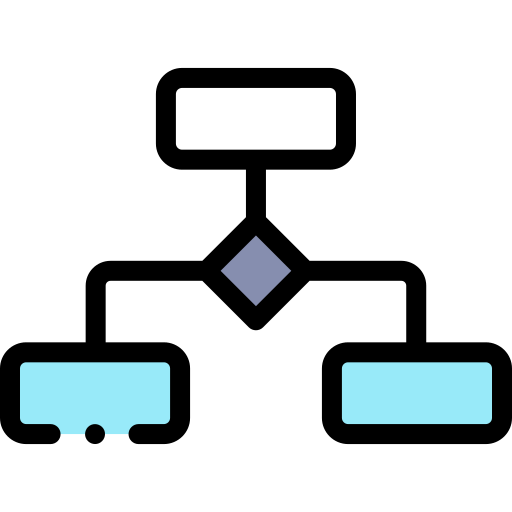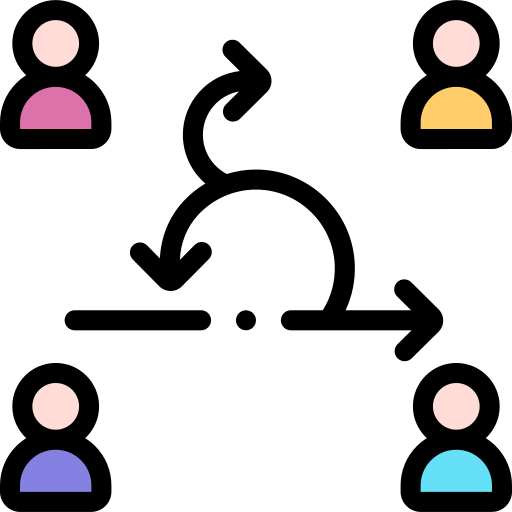MAMOS II focus on scaling the business, increasing market share, and establishing operational excellence.
The model enables to refine the value proposition, build a strong brand, and making strategic technology investments to position themselves for sustained growth and profitability. There is a need to balance investments in core systems and infrastructure with emerging technologies that can drive innovation and growth.
Model Fit
At this level, organizations are typically getting out of the startup phase and found a valuable customer proposition they can scale to build a profitable business. The main challenge is to achieve sustainable growth with the right foundations.

Scale business
The company shifted from discovering value to scaling valuable use-cases.

Structure the platform
The main focus is to structure the platform foundations for quality and scale.

Mid-sized team
Usually between $2-10m of annual revenues of 10-50 FTEs.
QE Blueprint
This stage is characterized by a higher level of complexity in terms of processes, infrastructure, and teams, which makes it challenging to ensure consistent quality across all areas of the business.
MAMOS
Methods
“Structure”
Methods need to be more structured and formalized with a greater emphasis on process and documentation to support growth and efficiency.
Establish clear priorities, identify the most critical features to ship, and implement a structured process for testing and validating these feature – all that with a greater need for cross-functional collaboration to foster alignment.
- Main KPI
- Light AR
- Kanban
- Definition of Ready
- Definition of Done
- Peer Review
- Time-boxed refactoring
- Incident Management
Guiding Principles
- Improve identified use-cases
- Structure architecture layers
- Support fast cycles
- Start capitalize tech assets
- Act as a one coherent unit
Key Changes
- Focus switch to structuring
- Processes must be defined
- More coordination required
- Shared ways of working needs
- Making things repeatable
Key Choices
- Product area to focus on
- Priorites per team
- Release process coordination
- DoR and DoD minimal states
- Systematic & review processes
Key Actions
- Setup team rituals
- Implement main processes
- Clarify delivery methodology
- Animate team work visibility
- Iterete on DoR and DoD
- Adapt based on outcomes
ARCHITECTURE
“Standardize”
MAMOS II focuses on standardizing technology solutions, establishing best practices, and ensuring that the technical design aligns with the business objectives.
This domain aims to provide a structured approach to the technical design and implementation of the product.
- API-led
- Modules
- Cloud PaaS
- Standard CI/CD
- Quality Gates
- Standard Operations
Guiding Principles
- Structure scalable foundations
- Minimize technical debts
- Define standards & integrate
- Ensure modularity of functions
- Components-based repository
Key Changes
- Customer base is growing
- Architecture for more volume
- Functional components appear
- Code ownership to clarify
- Minimum of standards to set
- Data model interactions to map
- System with more integrations
Key Choices
- Component boundaries
- Code ownership affectation
- Foundations to refactor
- Technological choices
- Minimal standards
- Quality gates thresolds
- Quality and testing practices
- Interconnectivity patterns
Key Actions
- Clarify components owners
- Define architecture evolution
- Set standards
- Define quality levels
- Refactor what’s needed
- Document data models, flows
- Industrialize standards
MANAGEMENT
“Structure Management”
As the company grows and the number of employees increases, it becomes essential to establish a management team that can oversee and coordinate the different functions and departments.
This domain implies to create a well-defined and organized management team that can ensure to maintain focus, alignment, and implement new practices.
- Leadership team (CFO, COO)
- Management team (Head of, Lead)
- Light OKR
- 1to1
- Skip 1to1
- Vision and mission
- Values
Guiding Principles
- Staff and coach the team
- Ensure cultural fit with core
- Common vision and mission
- Business to tech alignment
- Initiate measurements
Key Changes
- Not able interact with everyone
- More people shape the culture
- Leaders or influencers emerge
- Divergence of priorities
- Alignment harder to maintain
- Minimal measurements needed
Key Choices
- Vision and business mission
- Formalization of values
- Define a core leading team
- Hiring decisions
- Initial measurements
Key Actions
- Vision and mission statement
- Wirte business model canvas
- Share with everyone monthly
- Create management rituals
- Initiate 1to1 and skip 1to1
- Keep values live with example
- Have an HR referential
- Align objectives and KPIs
ORGANIZATION
“One Product Team”
At this level, the company is in the growth stage and is looking to scale up its operations.
The organization needs to be structured in a way that supports growth, promotes collaboration and communication, and aligns business and technology priorities.
- One product team
- Alignment role
- Enabling roles
- Platform role
- Support role
Guiding Principles
- Decouple in components
- Maintain consistency
- Support team growth stages
- Structure for expansion
- Introduce management layer
Key Changes
- Components team structure
- New roles and interactions
- New practices appear
- Leaders with less contact
- Define standard processes
- Introduce of formal support
- Groups and mental silos start to appear
Key Choices
- Keep or change the CTO
- Components teams structure
- New roles and interactions
- New practices to prioritze
- Promote or hire
- Cultural fit requirements
Key Actions
- Create management layer
- Structure component teams
- Organize new roles
- Promote and hire key roles
- Align coherent practices
- Build on-boarding process
SKILLS
“Staff to replicate”
IA crucial element of this development stage is ensuring that the organization has the right set of skills to meet the demands of the business for today, and well-equipped for tomorrow.
- Core team attraction
- Internalize key functions
- Deal with partners
- Anticipate roles growth
- Cooptation mechanism
Guiding Principles
- Staff to support growth
- Ensure operational support
- Get management skills
- Leverage external expertises
- Initiate training and mentoring
Key Changes
- Skill standardization appears
- Core expertises are clearer
- Supporting skills required
- Part of skill are externalized
- Skills development processes
Key Choices
- Position and skills
- Core expertises list
- Support skills to add
- Internal vs external skills
- Skills development process
Key Actions
- Identify core position skills
- Document key expertises
- Staff support skills
- Clarify internal vs. external
- Initiate skills development
- Leverage external skills